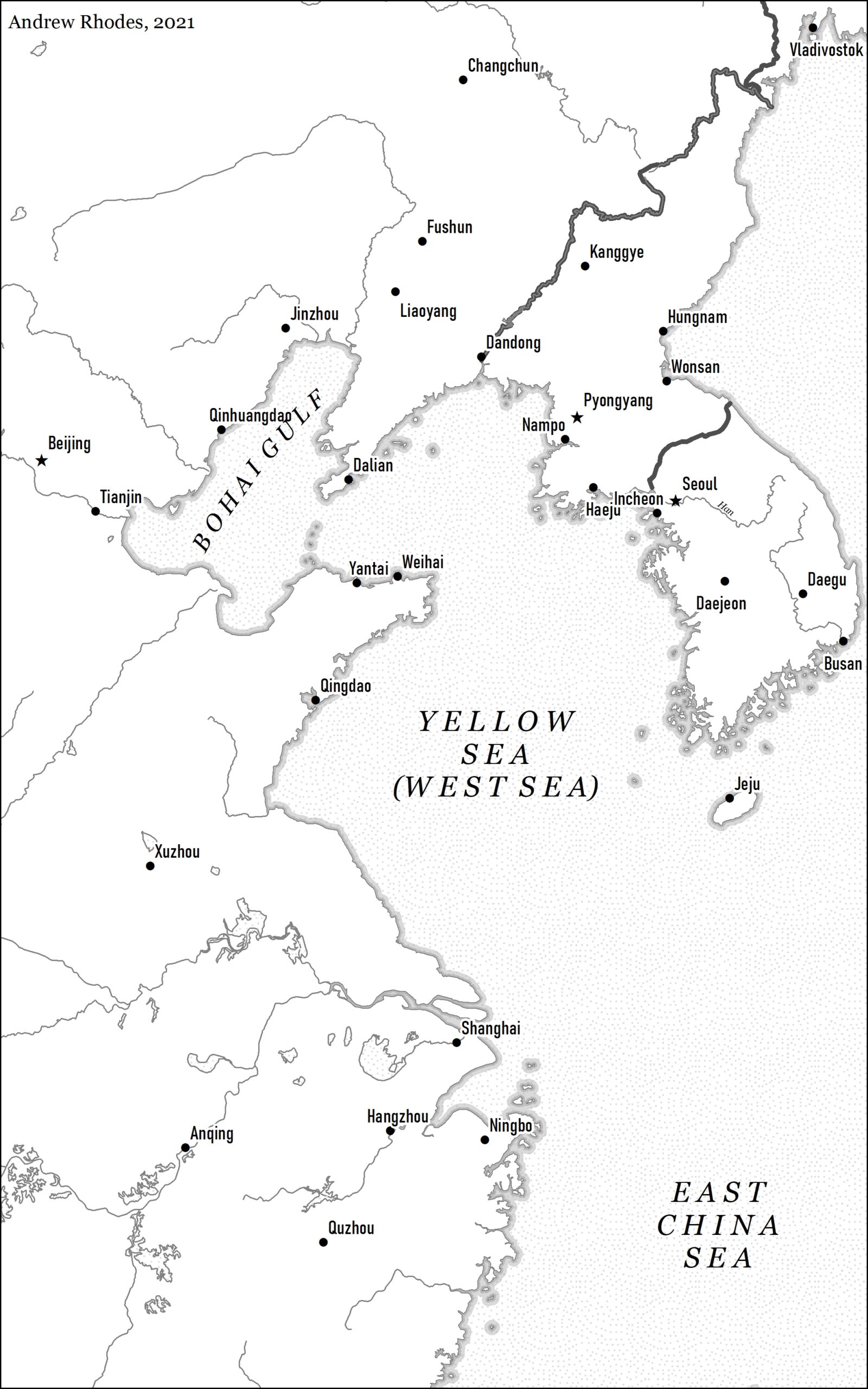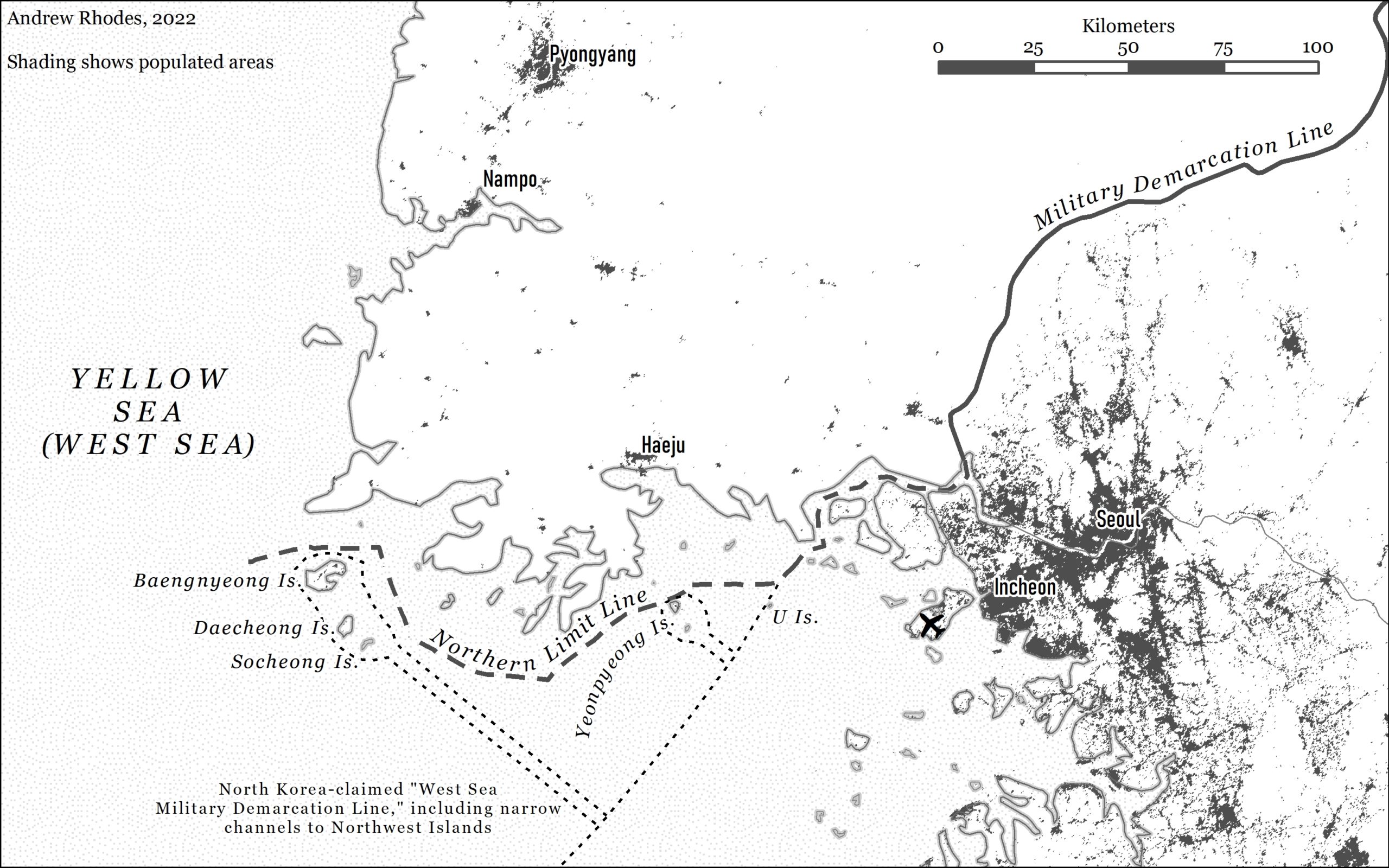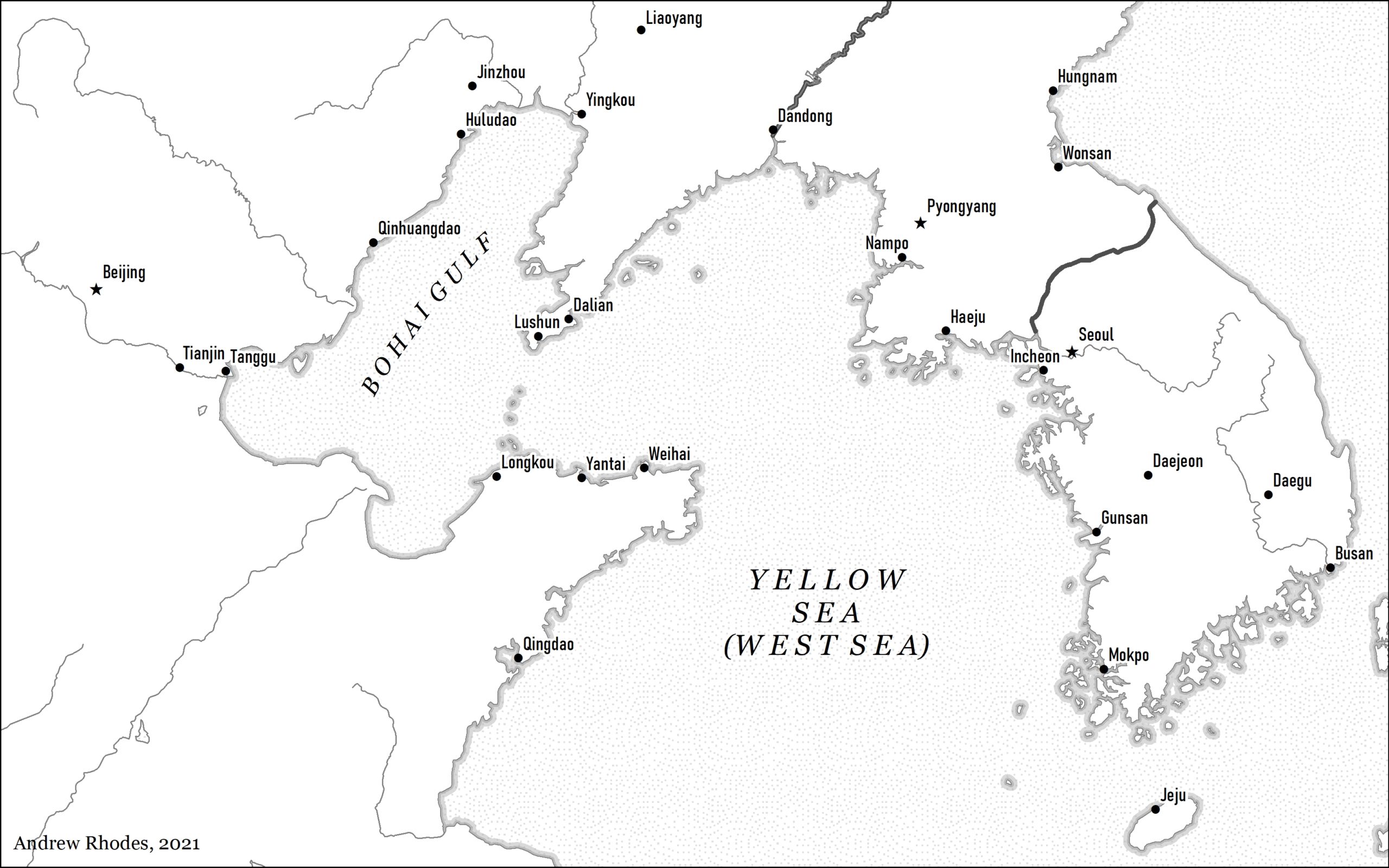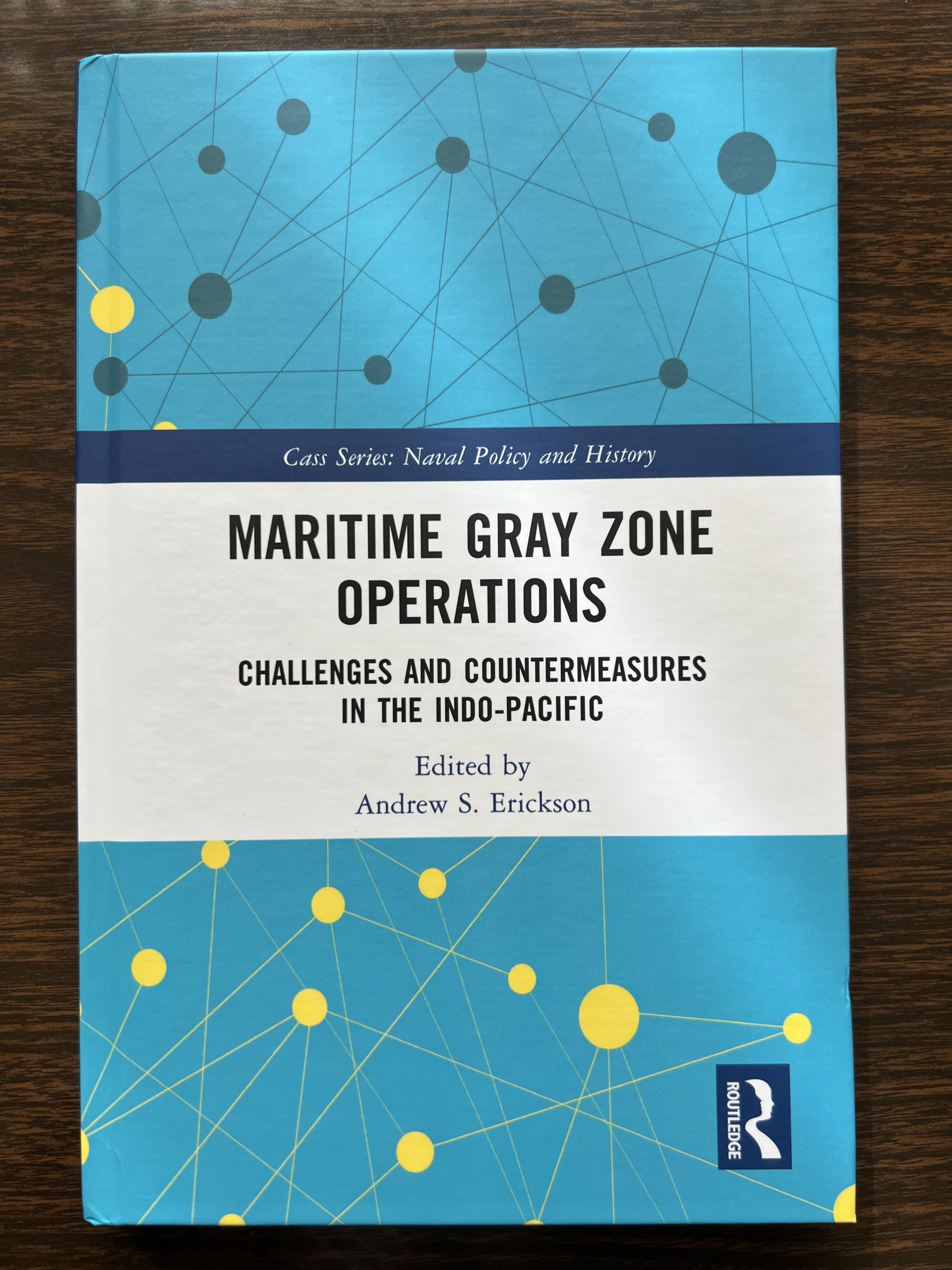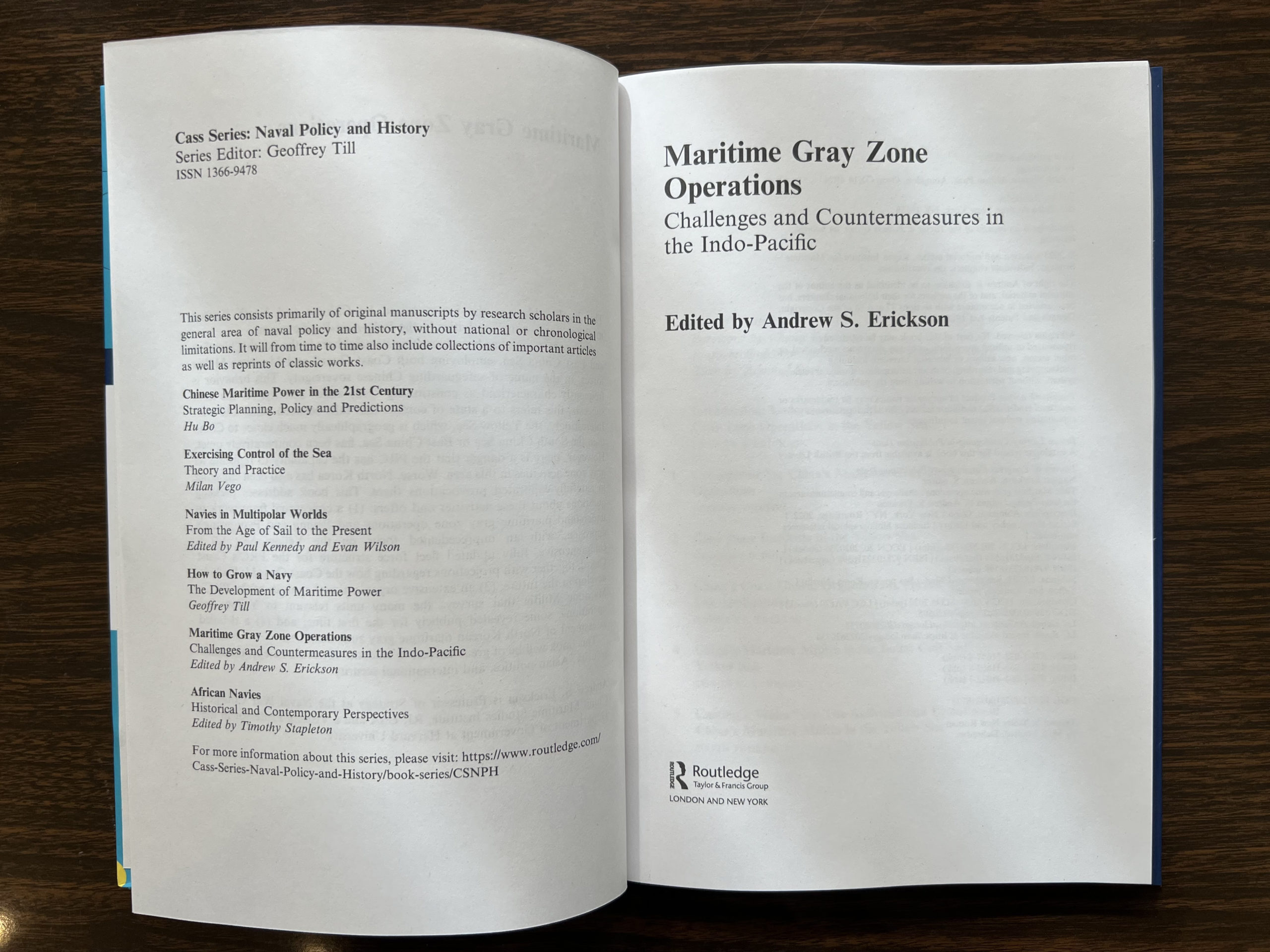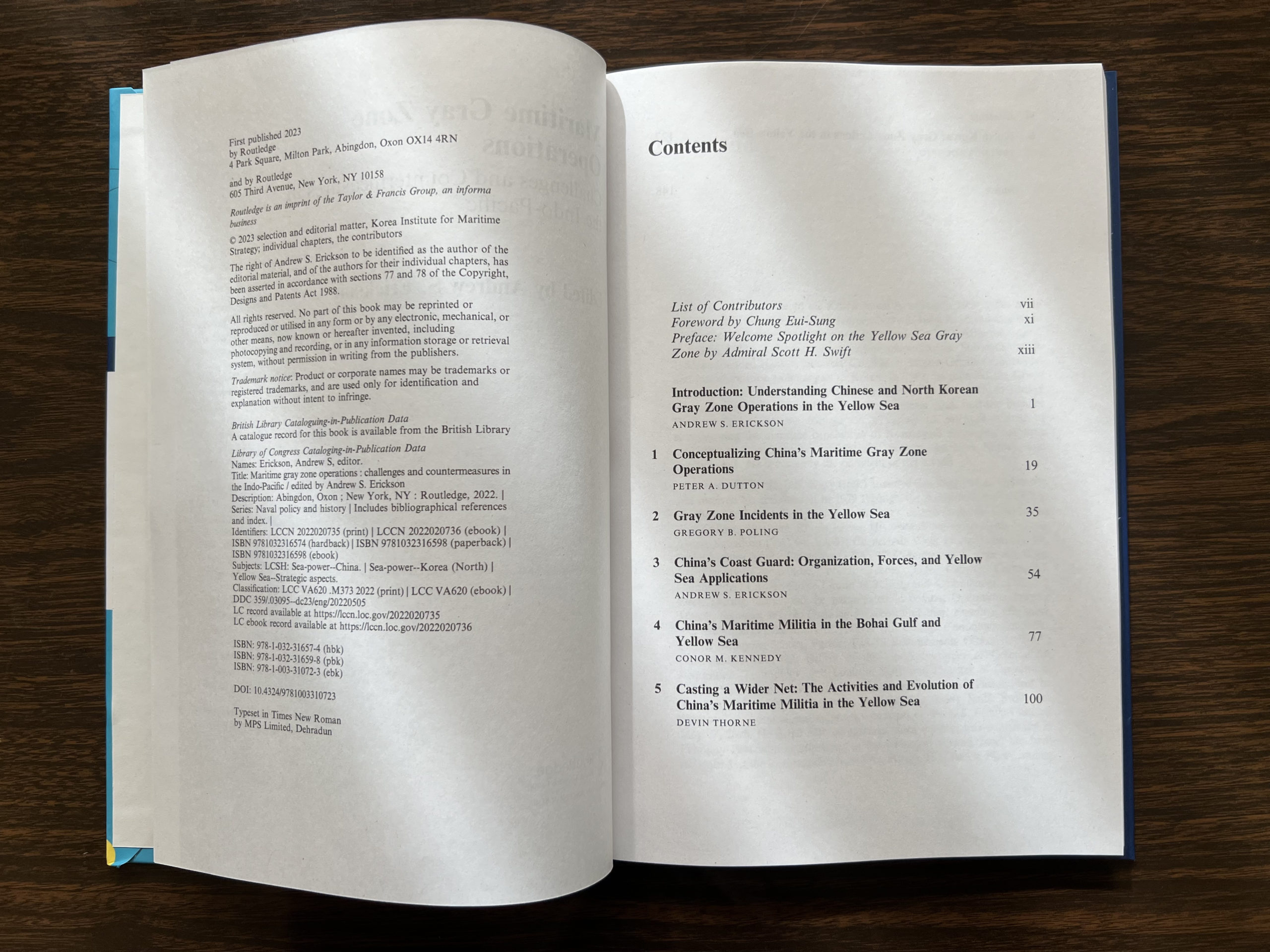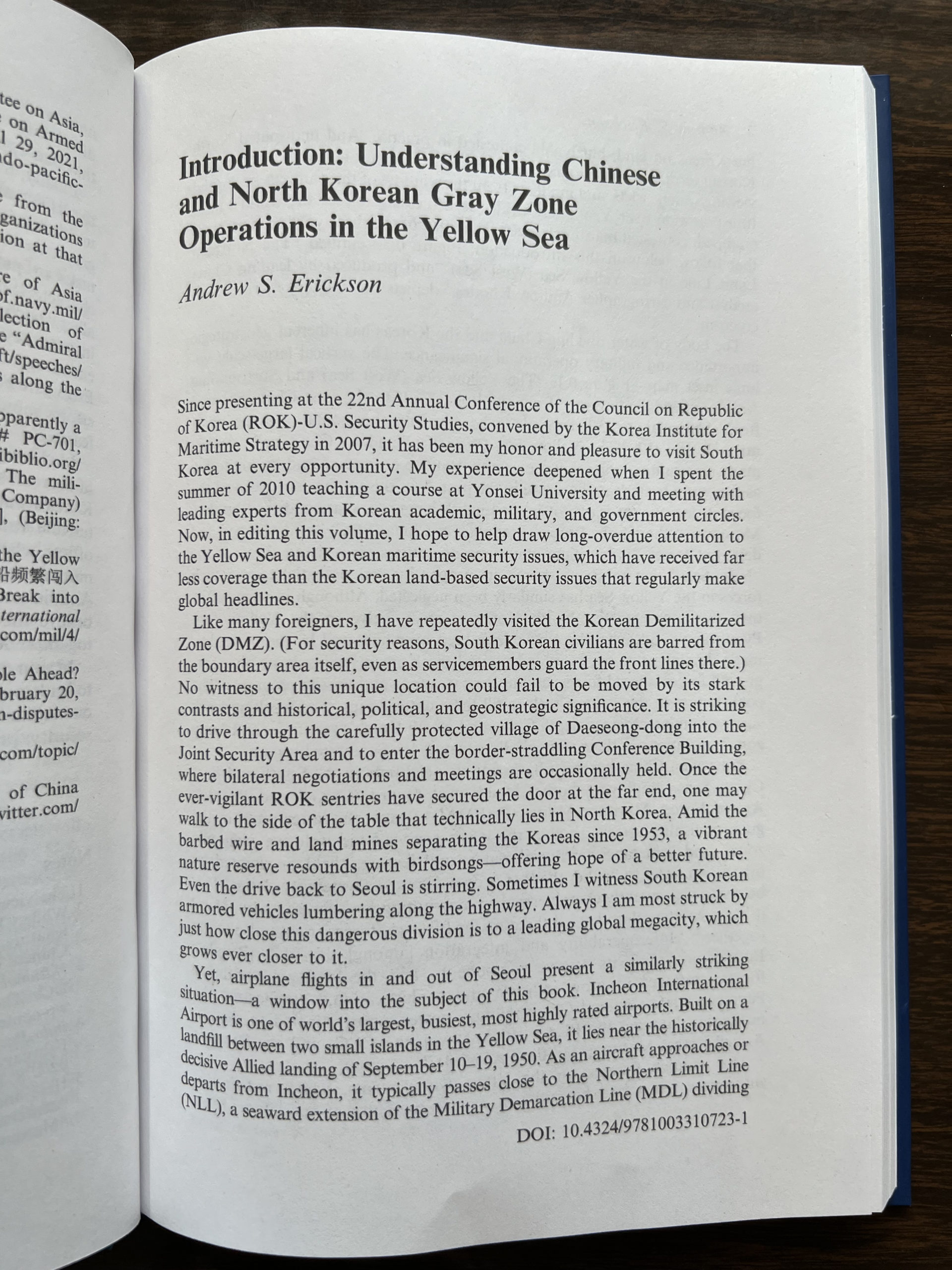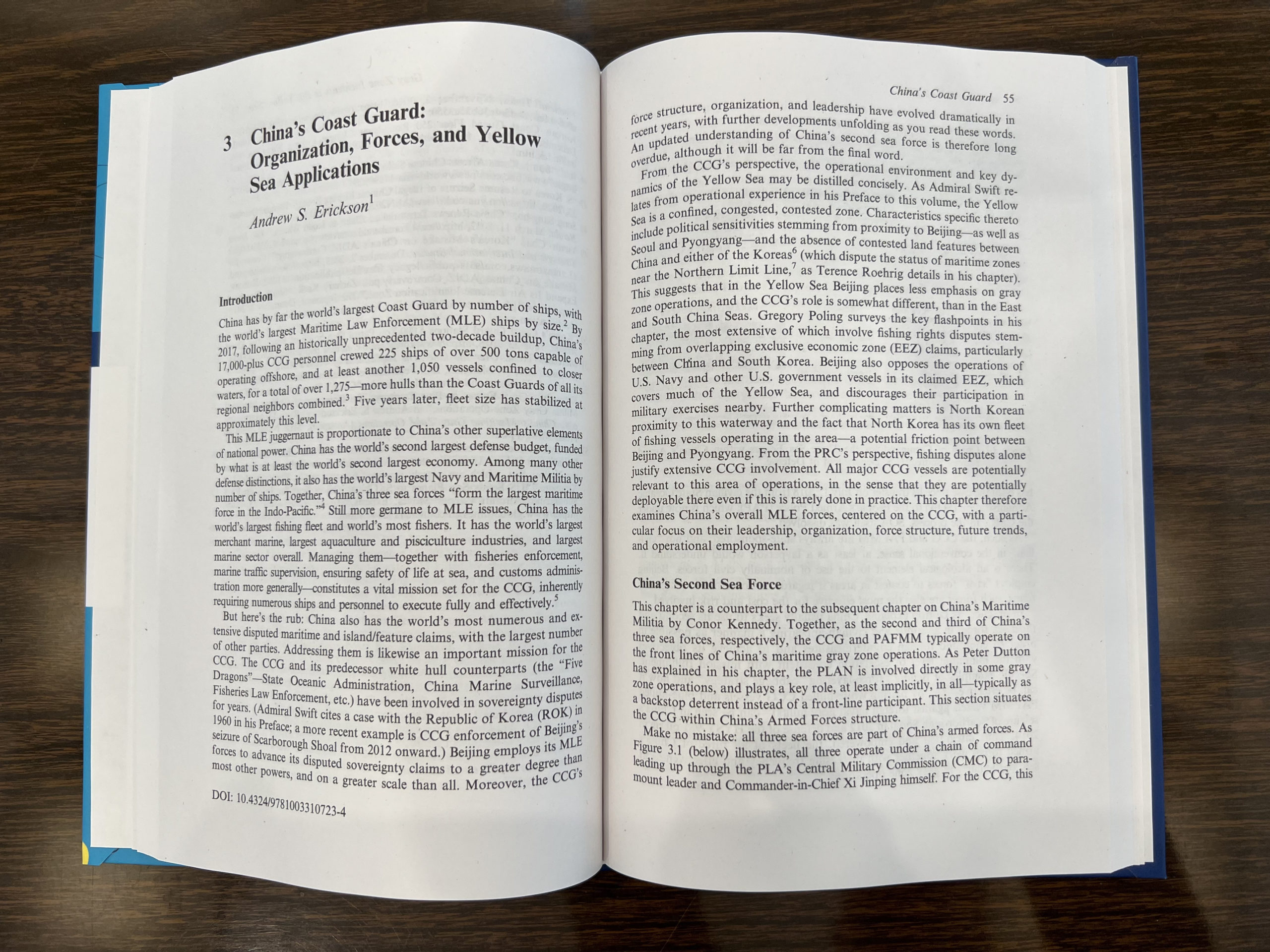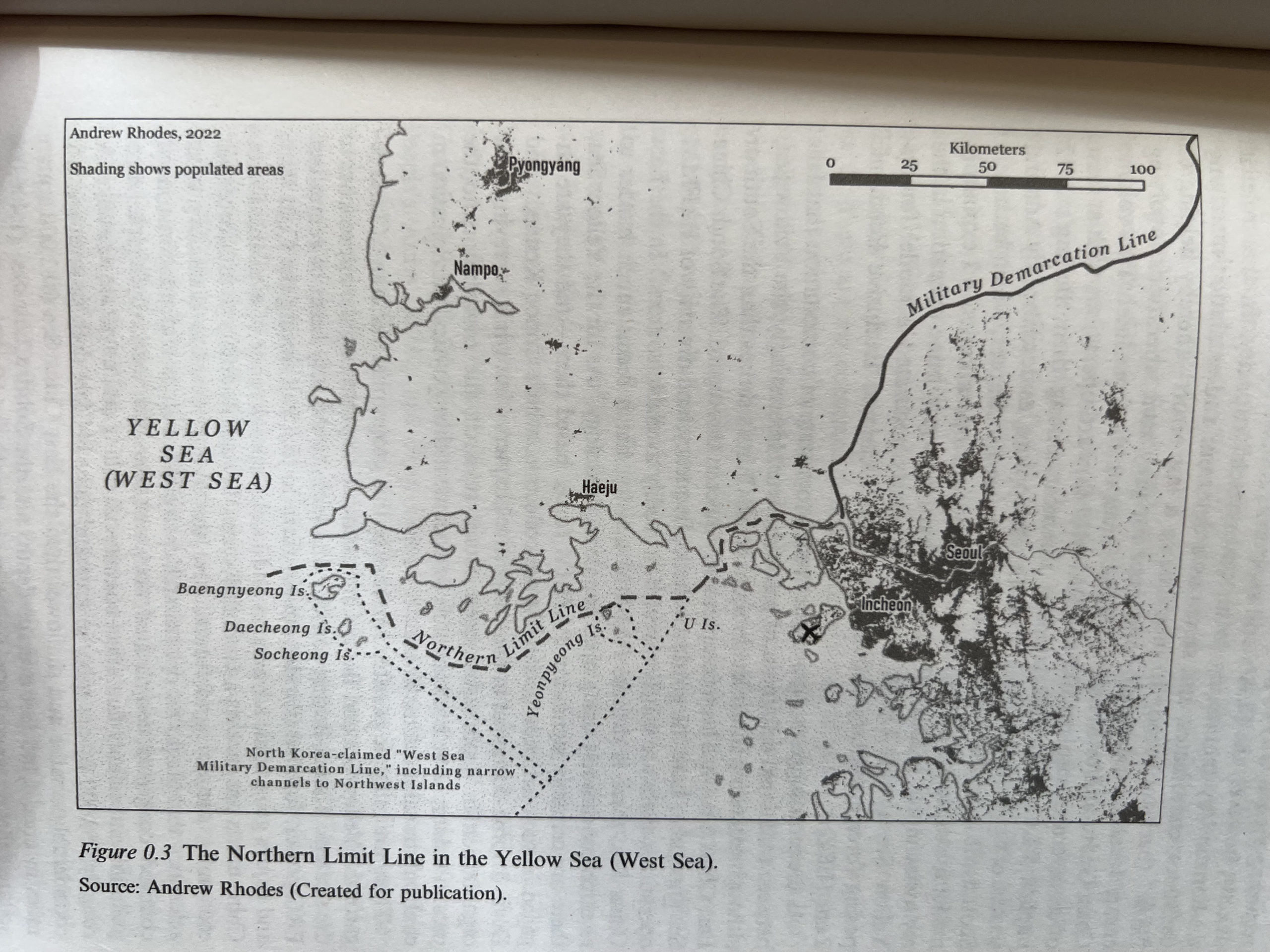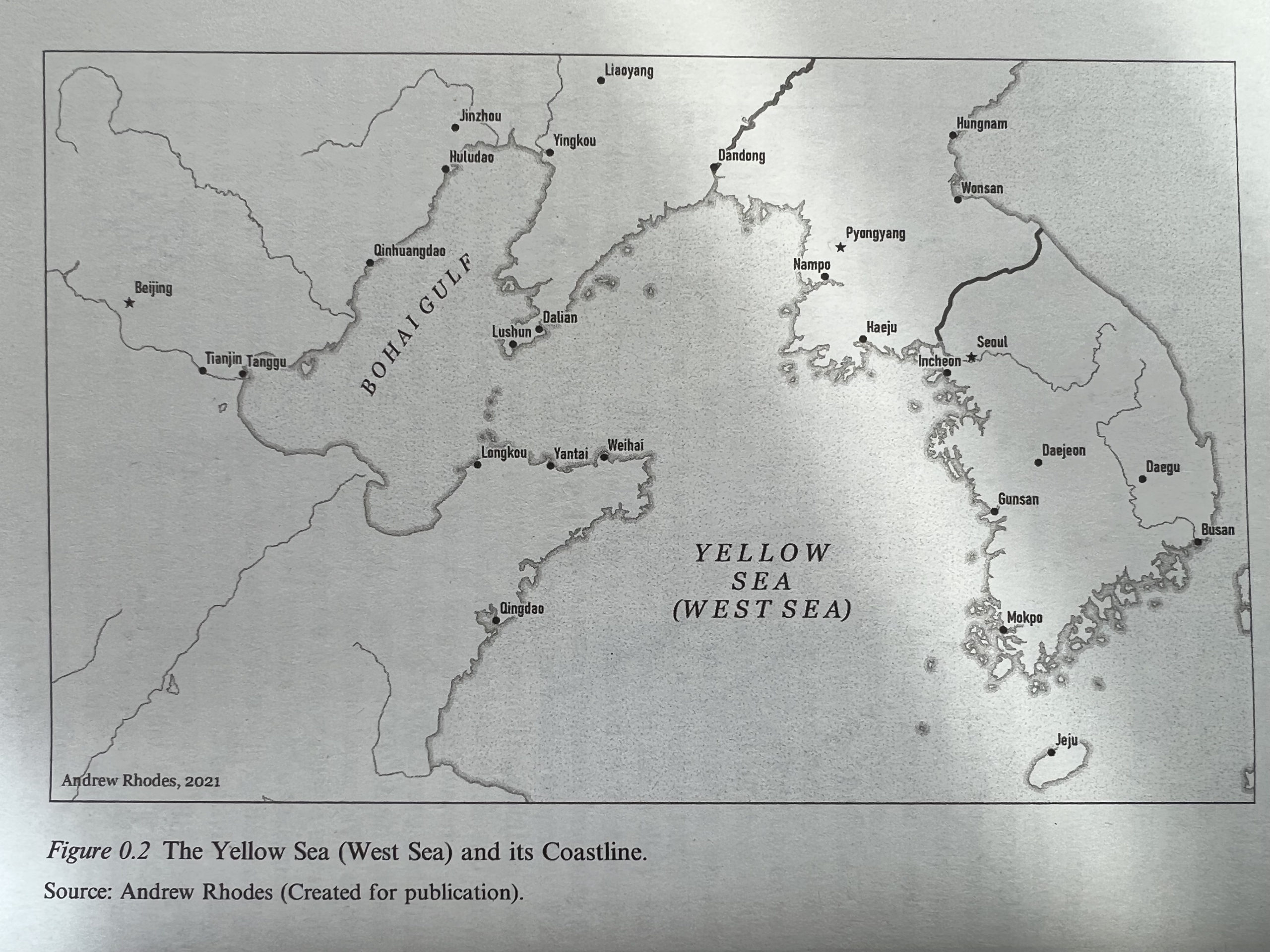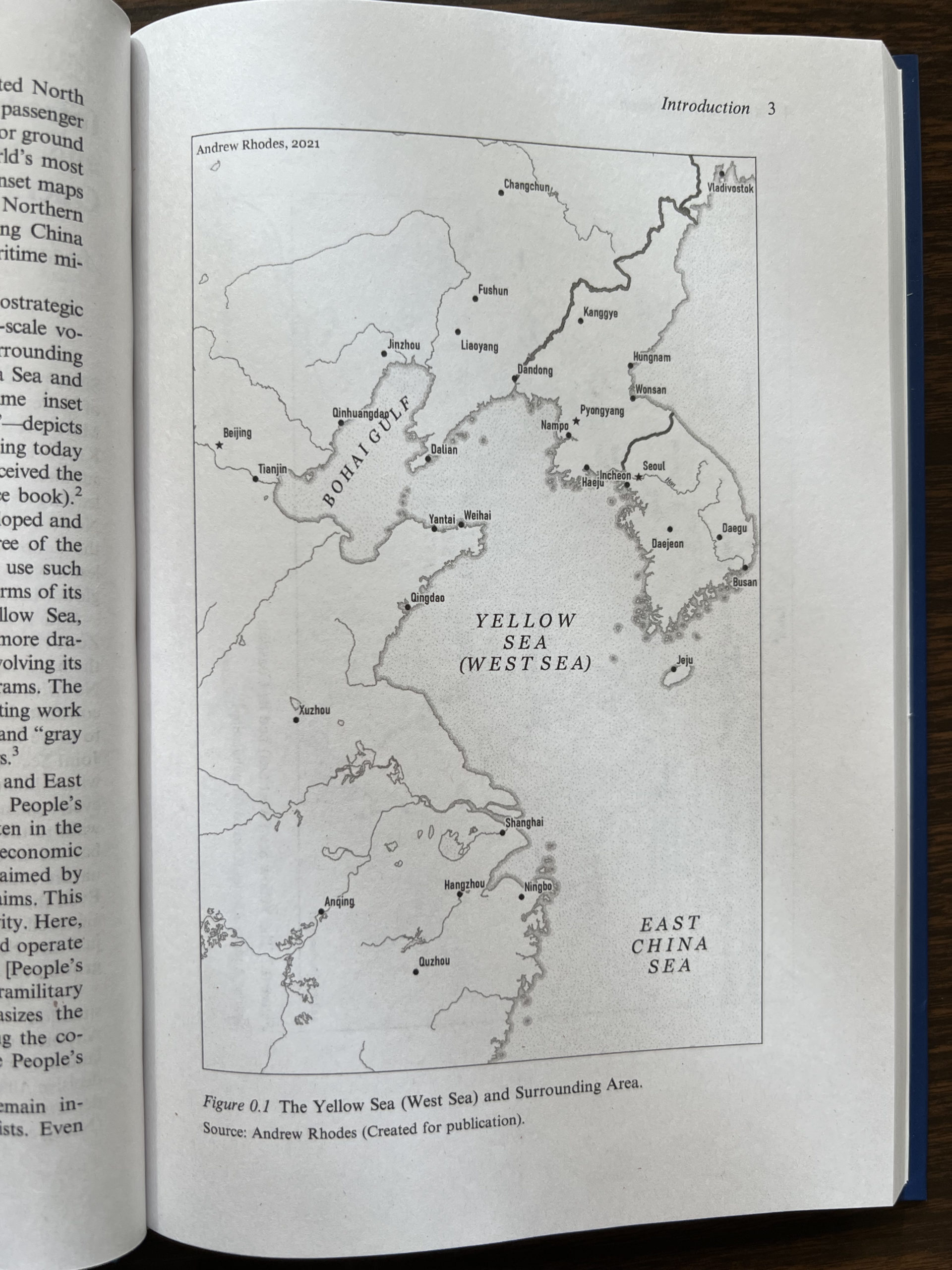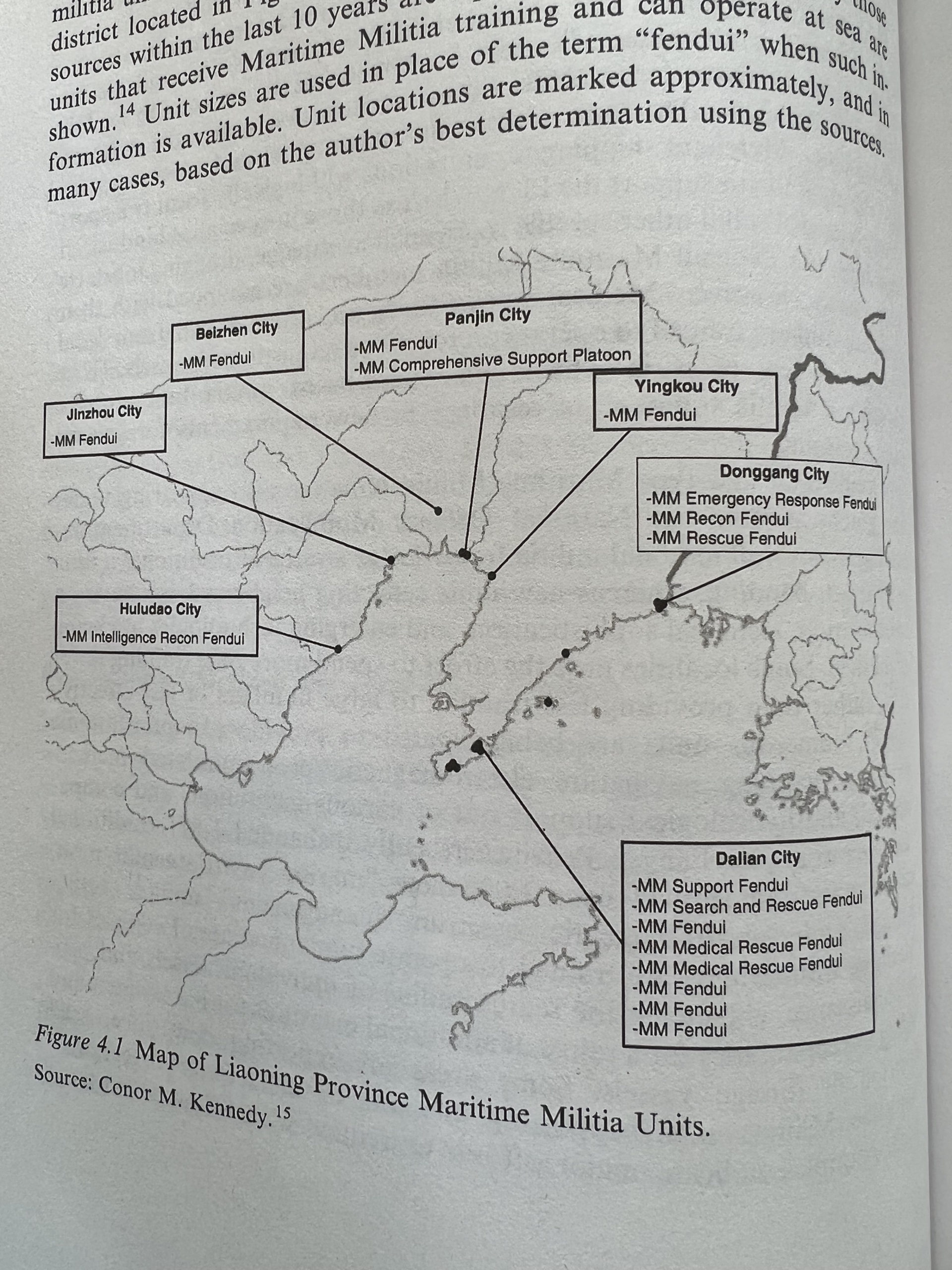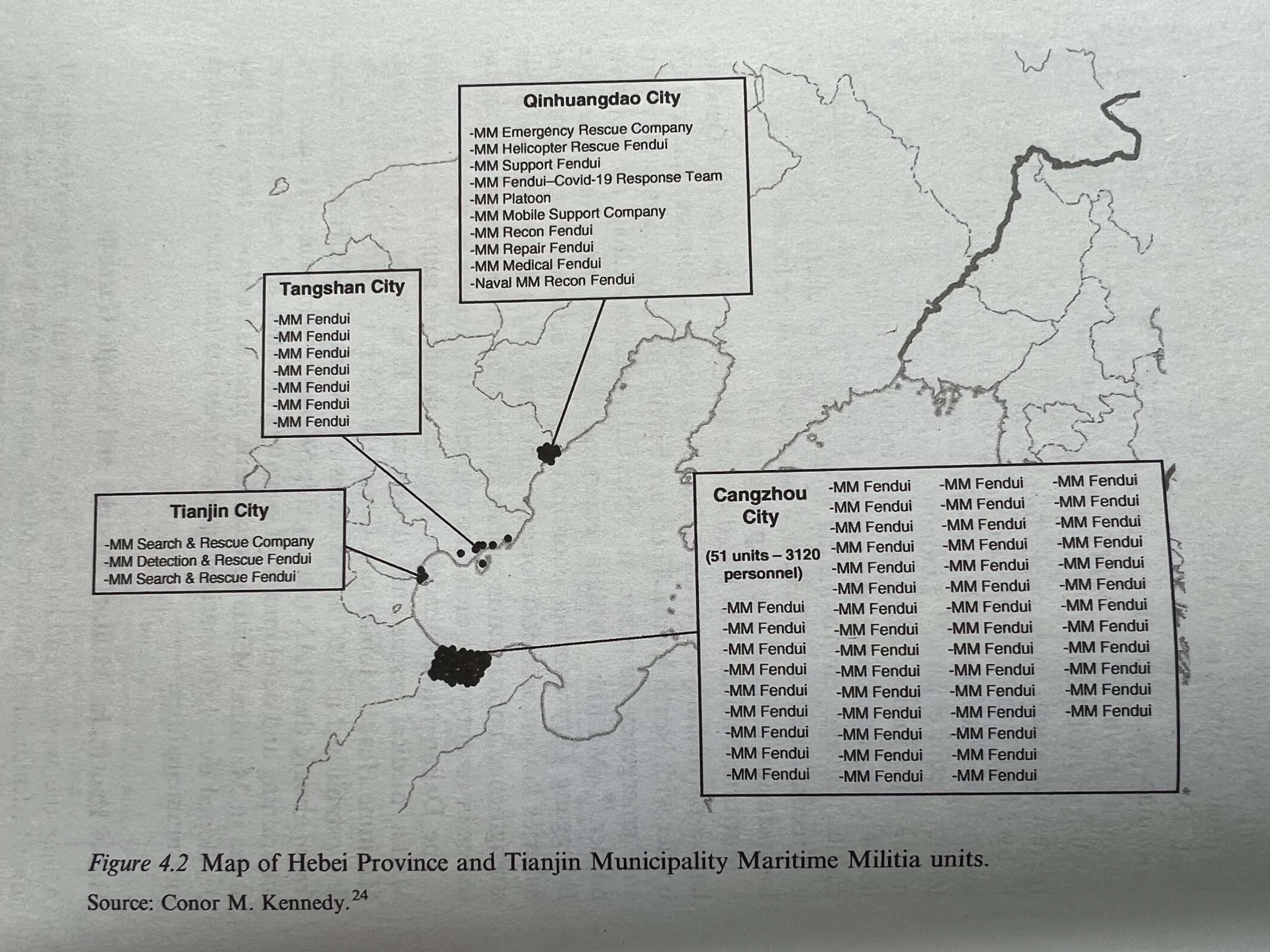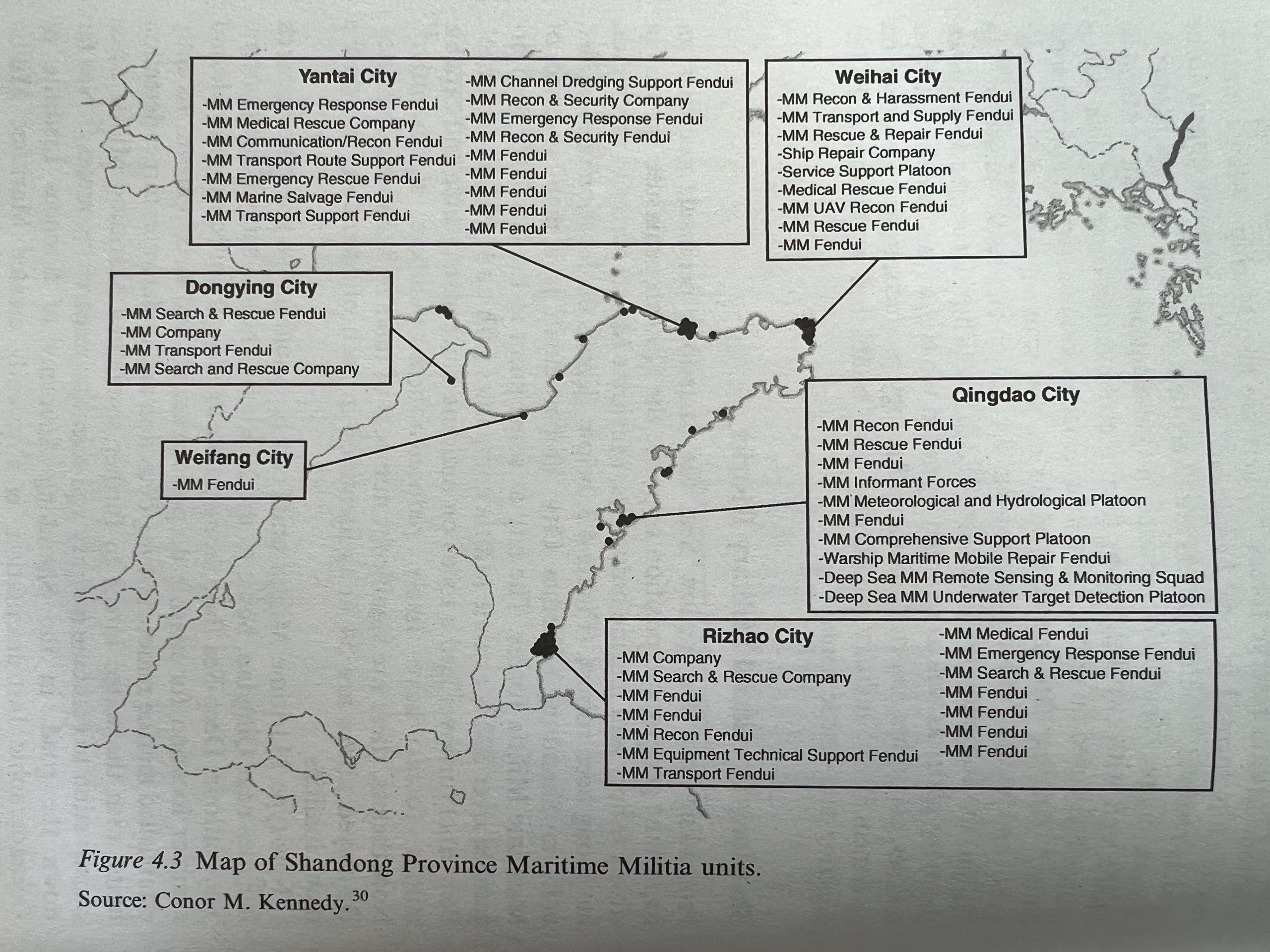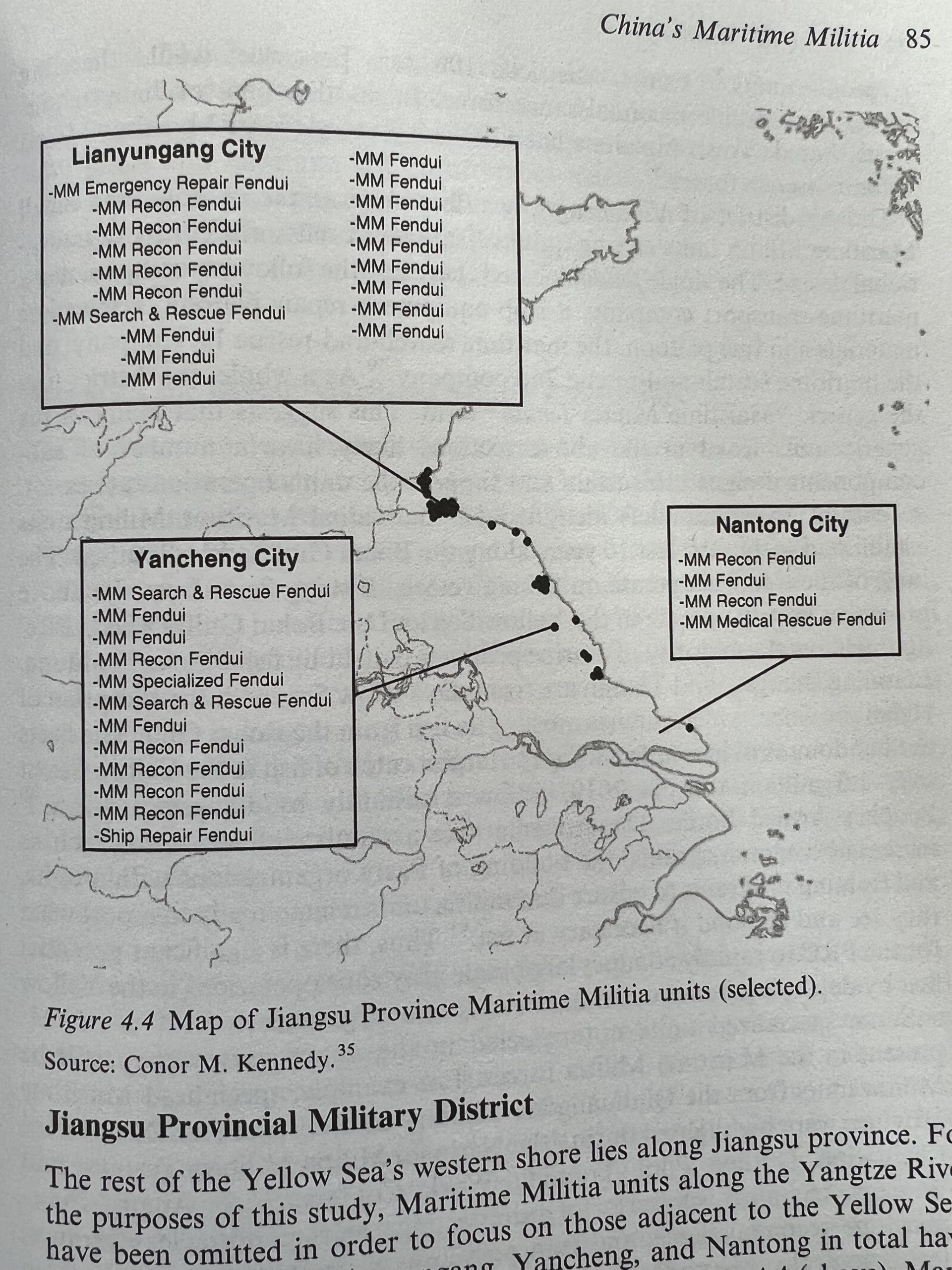How Gray-Zone Ops in the Yellow Sea Could Trigger a Maritime Crisis
Andrew S. Erickson, “How Gray-Zone Ops in the Yellow Sea Could Trigger a Maritime Crisis,” Harvard Fairbank Center Blog Post, 31 January 2023.
A new book examines the geopolitical risks near the Korean Peninsula
CLICK HERE TO DOWNLOAD A FULL-TEXT PDF.
The body of water dividing the People’s Republic of China and the Koreas has inherent geostrategic importance and military operational significance. It’s long been a complex, congested, contested water space: an overfished area beset by conflicting historical narratives and sovereignty claims. Yellow Sea battles were vital to the outcome of the Sino-Japanese and Russo-Japanese wars. Achieving at least temporary local control in the Yellow Sea was central to Japan’s strategy in the Russo-Japanese War. Control of the Yellow Sea was part of the Imperial Japanese Navy’s geographically-layered strategy between 1943 and its retrenchment towards the end of World War II.
Since the founding of the People’s Republic, Beijing has regarded the Yellow Sea and adjoining Bohai Gulf as critical to protecting the approaches to the strategic corridor running from the Bohai Gulf through Tianjin to Beijing (just 67 miles as the crow flies) that leads to the very heart of centralized PRC power. Following concerted preparations throughout the Cold War, including the fortification of islands spanning the Bohai Gulf to create defensive chains, as well as massive military and paramilitary buildup since the late 1990s, China enjoys both geographic advantages and local preponderance of available forces. Beijing exerts pressure on both Koreas through its ability to influence their economies and security. But beyond that, China also has the capability to launch “gray zone” activities—somewhere between peace and war—in the contested Yellow Sea using Coast Guard and Maritime Militia vessels that it has long wielded in the South and East China Seas.
Complicating matters further, the 1953 Korean Armistice Agreement left control over several islands in dispute. The agreement divided the majority of offshore islands between the Koreas based on a former provincial boundary line, but also stipulated that five “Northwest Islands”—Baengnyeong, Daecheong, Socheong, Yeonpyeong, and U—would remain under the control of the United Nations Command and South Korea. Following failure to agree upon how to extend the peninsula-dividing Military Demarcation Line seaward as a part of the Armistice itself, a boundary running roughly midway between the Northwest Islands and mainland North Korea—eventually termed the Northern Limit Line—was subsequently determined and implemented without Pyongyang’s participation.
North Korea has since engaged in its own limited-intensity maritime provocations, sometimes with fatal results. These include Pyongyang-sponsored smuggling related to its nuclear development program, fishing disputes that have resulted in the deaths of South Korean fishermen and coastguardsmen, the sinking of the South Korean naval vessel Cheonan, the shelling of Yeonpyeong Island, other clashes along the Northern Limit Line, and most recently oil smuggling operations that China has abetted in contravention of a UN-led effort to interdict them.
While haunted by history and ripe for future rivalry, this strategic sea has long failed to receive the scholarly attention it deserves. Moreover, although China has developed and deployed forces for maritime gray zone operations vis-à-vis all three of the “Near Seas” that touch its shores, its propensity and potential to use such forces in the Yellow Sea have similarly been neglected. In a new book, Maritime Gray Zone Operations: Challenges and Countermeasures in the Indo-Pacific, military experts offer fresh insights into China and North Korea’s maritime activities in the Yellow Sea.
Moving forward, matters could get far worse. Beijing appears determined to thwart a future Korean reunification. North Korea’s policies and its very future remain uncertain. Pyongyang’s reliance on Beijing’s support may mitigate its efforts to assert its overlapping claims within the relatively narrow confines of the northern Yellow Sea. Should the Kim dynasty encounter challenges to its power in the future, this would most likely motivate further deference to China, but could ultimately trigger more nationalist policies. These dynamics could thaw centuries-old Sino-Korean maritime, riverine, and land border disputes long frozen by contemporary geopolitics but freighted with history and national identity.
At its heart, the Yellow Sea area reveals a volatile political-military microcosm: one of the world’s most cramped, challenged maritime spaces. As an aircraft approaches or departs from Seoul’s Incheon International Airport, one of the world’s largest and busiest, it typically passes close to the Northern Limit Line, a seaward extension of the Military Demarcation Line dividing the Koreas since the 1953 Korean Armistice Agreement on land, but highly contested in practice. Incheon Airport lies near the historically-decisive Allied landing of 1950; today even undisputed North Korean territorial waters, airspace, and territory are not far away. Policymakers, take note: Danger looms in the contested Yellow Sea.
Andrew S. Erickson is a visiting Professor in Harvard’s Department of Government and an Associate in Research at the Fairbank Center. He is Professor of Strategy and the Research Director at the U.S. Naval War College’s China Maritime Studies Institute (CMSI). Erickson recently edited a new volume, Maritime Gray Zone Operations: Challenges and Countermeasures in the Indo-Pacific, which offers insights into China and North Korea’s maritime activities in the Yellow Sea.
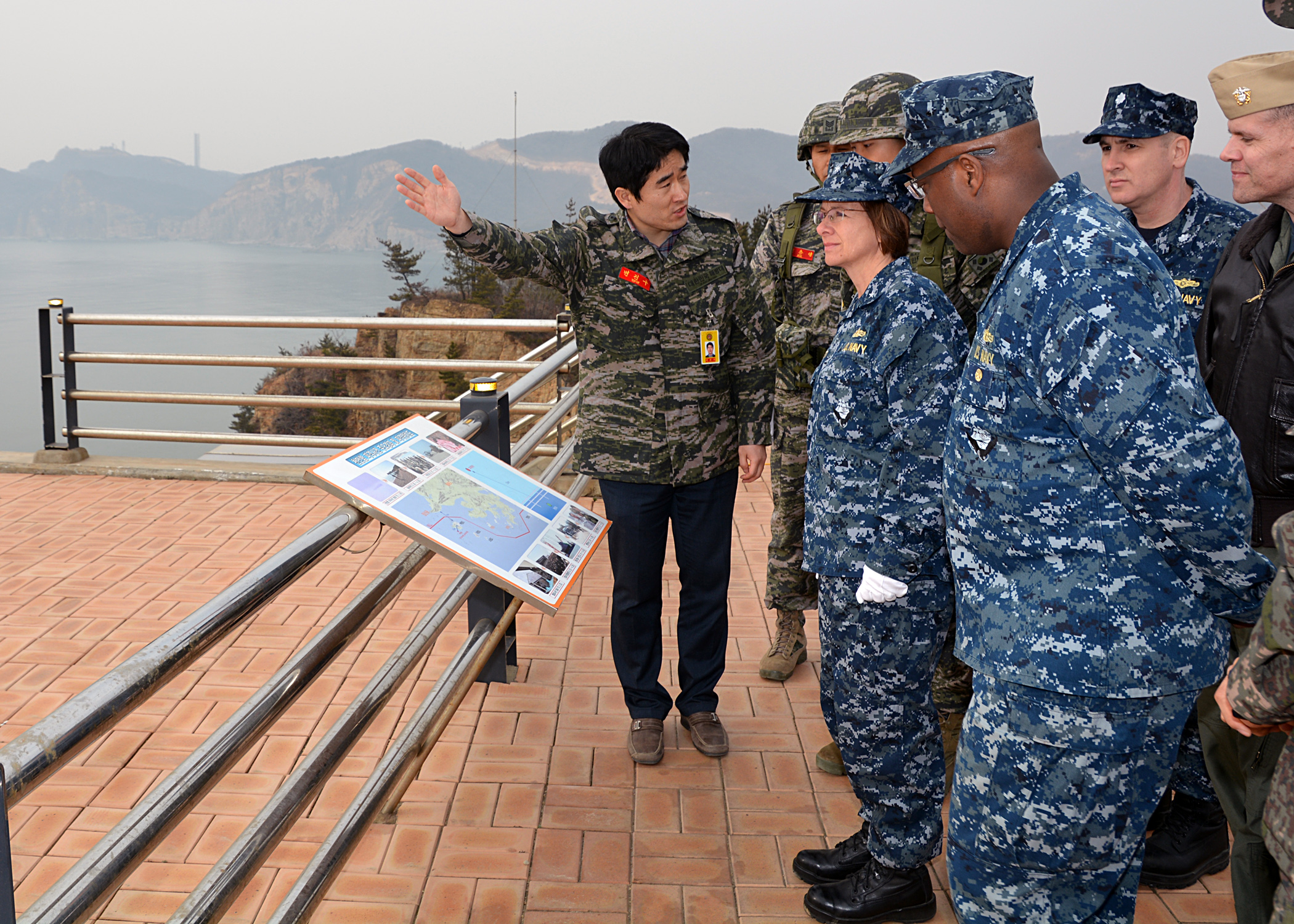
150320-N-JN652-445 BAENGNYEONGDO ISLAND, Republic of Korea (March 20, 2015) Rear Adm. Lisa Franchetti, commander of U.S. Naval Forces Korea, receives a briefing about the Korean sailors lost during the sinking of ROKS Cheonan (PCC-772) at the memorial on Baengnyeongdo Island. The 1,200-ton ship broke into two from an explosion, suspected to be from a North Korean torpedo on March 26th, 2010 in the Yellow Sea. Of the 104-man crew, 46 Korean Sailors perished in the incident, along with a Republic of Korea navy diver who lost his life during the subsequent rescue efforts. (U.S. Navy photo by Chief Mass Communication Specialist Wendy Wyman/Released)
ADDITIONAL INFORMATION
New Book: “Maritime Gray Zone Operations: Challenges and Countermeasures in the Indo-Pacific”
Andrew S. Erickson, ed., Maritime Gray Zone Operations: Challenges and Countermeasures in the Indo-Pacific (New York, NY: Routledge Cass Series: Naval Policy & History, 2022).
A new volume edited by Dr. Andrew S. Erickson offers new insights into China and North Korea’s maritime activities in the Yellow Sea below the threshold of armed conflict: between peace and war. The body of water dividing China and the Koreas has inherent geostrategic importance and military operational significance. This book endeavors to increase attention to, and understanding of, vital but hitherto insufficiently illuminated issues in this complex, congested, contested water space. Currently a visiting professor in Harvard’s Department of Government, Erickson is also an associate in research at the Fairbank Center and a Professor of Strategy and the Research Director at the U.S. Naval War College’s China Maritime Studies Institute (CMSI).
Sponsored by the Korea Institute for Maritime Strategy (KIMS) and published in Naval War College Professor Geoffrey Till’s Routledge Cass Series on Naval Policy & History, this book offers:
- A preface by former Commander, U.S. Pacific Fleet Admiral Scott Swift (USN, Ret.) drawing on his experience in operational leadership.
- Chapters with original scholarship and analysis by leading specialists regarding China, the Koreas, and maritime affairs.
- Original maps by distinguished Naval War College graduate and leading scholar-practitioner on the nexus of geography and national security, Andrew Rhodes. Among his professional affiliations, Rhodes is the membership chair of the Washington Map Society and the winner of its 2019 Walter W. Ristow Prize.
Perhaps the most striking of these maps (pictured below) reveals a volatile political-military microcosm: one of the world’s most cramped, challenged maritime spaces. As an aircraft approaches or departs from Incheon International Airport, one of the world’s largest and busiest, it typically passes close to the Northern Limit Line (NLL), a seaward extension of the Military Demarcation Line dividing the Koreas since the 1953 Korean Armistice Agreement on land, but highly contested in practice. This map depicts the NLL, Pyongyang’s counterproposals thereto, and the five nearby Northwest Islands under combined United Nations Command and South Korean control since 1953. Incheon Airport lies near the historically-decisive Allied landing of 1950; today even undisputed North Korean territorial waters, airspace, and territory are not far away.
In the first of the volume’s detailed, bilingually footnoted chapters, Fairbank Center associate in research and former CMSI Director Dr. Peter Dutton offers a conceptual framework for understanding PRC maritime gray zone operations.
Other chapters offer background and comparative context vis-à-vis the South China Sea and East China Sea; probe the evolution of PRC coast guard and maritime militia forces as well as their current and possible future operations in the Yellow Sea; and examine North Korean strategy, policy, and actions in these strategically pivotal yet strangely understudied waters.
COMPLETE INFORMATION ON VOLUME
Check out our new book, published in Naval War College Professor Geoffrey Till’s Routledge Cass Series on Naval Policy & History. Sponsored by the Korea Institute for Maritime Strategy (KIMS), it offers:
1) An authoritative Preface by former Commander, U.S. Pacific Fleet Admiral Scott Swift (USN, Ret.).
2) Cutting-edge chapters by Peter Dutton, Gregory Poling, Conor Kennedy, Devin Thorne, & Terence Roehrig.
3) Uniquely revealing maps by Andrew Rhodes—including of the Northern Limit Line, Pyongyang’s counterproposals thereto, the five nearby Northwest Islands under South Korean control.
Proud to work with these leading stakeholders & superstars! Peter offers the best gray zone conceptual framework I’ve yet seen. Greg offers a tour de force of comparative context vis-a-vis the South China Sea & East China Sea. Devin offers unparalleled insights on the evolution of specialized PAFMM forces & the extent of their operations in the Yellow Sea. Terry delivers a powerful history & current survey of North Korean strategy, policy, & actions in these strategically pivotal yet strangely understudied waters.
To see just how deep our new book dives in with original Chinese-language research, etc., see the graphics (& endnotes) in Conor’s chapter! He’s identified, geolocated & analyzed Yellow Sea Maritime Militia units beyond anything else Open Source to the very best of my knowledge.
I’m honored to offer an Introduction and a chapter on the China’s Coast Guard. Hope this book helps increase attention to, & understanding of, all these vital issues…
Andrew S. Erickson, ed., Maritime Gray Zone Operations: Challenges and Countermeasures in the Indo-Pacific (New York, NY: Routledge Cass Series: Naval Policy & History, 2022).
Author of:
- Andrew S. Erickson, “Introduction: Understanding Chinese and North Korean Gray Zone Operations in the Yellow Sea,” 1–18.
- Andrew S. Erickson, “China’s Coast Guard: Organization, Forces, and Yellow Sea Applications,” 54–76.
Book Description
This book addresses the issues raised by Chinese and North Korean maritime ‘gray zone’ activities in the Indo-Asia-Pacific region.
For years, China has been harassing its neighbors in South China Sea and East China Sea, employing both coast guard and maritime militia forces, in the name of safeguarding Chinese sovereignty. This behavior is frequently characterized as constituting ‘gray zone’ activity. As the term suggests, this refers to a state of conflict that falls between peace and war. Interestingly, the Yellow Sea, which is geographically much closer to China than South China Sea or East China Sea, has been comparatively quiet. However, there is a danger that the PRC has the capability to replicate its gray zone activities in this area. Worse, North Korea has also been engaging in carefully-calibrated provocations there. This book addresses pressing questions about these activities and offers: (1) a conceptual framework to understand maritime gray zone operations and Beijing and Pyongyang’s approach, with an unprecedented focus on the Yellow Sea; (2) a comprehensive, fully updated fleet force structure for the PRC’s Coast Guard, together with projections regarding how the Coast Guard is likely to develop in the future; (3) an extensive organizational analysis of the PRC’s Maritime Militia that surveys the many units relevant to Yellow Sea operations, some revealed publicly for the first time; and (4) a detailed assessment of North Korean maritime ‘gray zone’ activities.
This book will be of great interest to students of naval strategy, maritime security, Asian politics, and international security.
Table of Contents
Introduction: Understanding Chinese and North Korean Gray Zone Operations in the Yellow Sea
Andrew S. Erickson, U.S. Naval War College and Harvard University
1. Conceptualizing China’s Maritime Gray Zone Operations
Peter A. Dutton, U.S. Naval War College and MIT
2. Gray Zone Incidents in the Yellow Sea
Gregory B. Poling, Center for Strategic and International Studies
3. China’s Coast Guard: Organization, Forces, and Yellow Sea Applications
Andrew S. Erickson, U.S. Naval War College and Harvard University
4. China’s Maritime Militia in the Bohai Gulf and Yellow Sea
Conor M. Kennedy, U.S. Naval War College
5. Casting a Wider Net: The Activities and Evolution of China’s Maritime Militia in the Yellow Sea
Devin Thorne, Threat Intelligence Analyst, Recorded Future
6. North Korea: Gray Zone Actions in the Yellow Sea
Terence Roehrig, U.S. Naval War College and Columbia University

